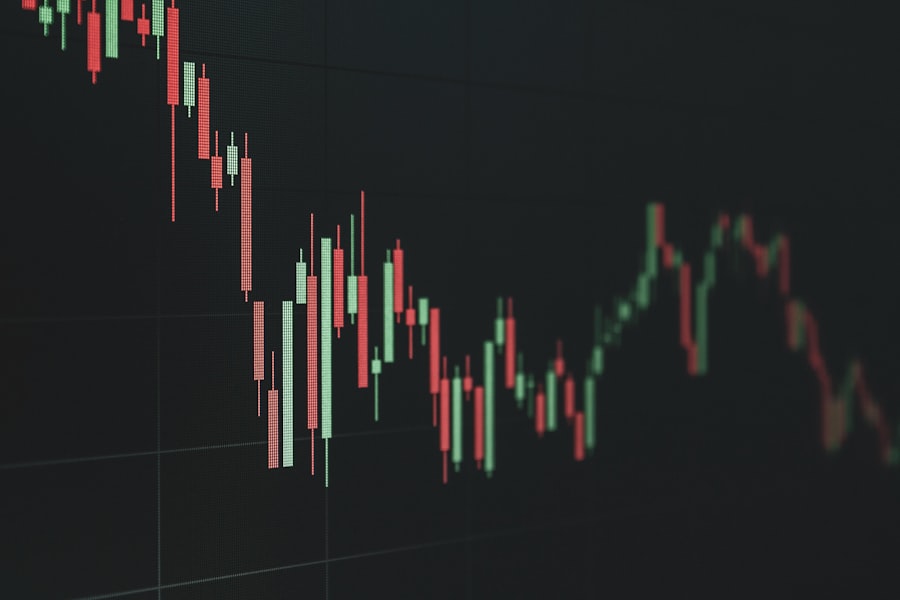Global systemic risk refers to the potential for widespread instability in the financial system that can arise from interconnectedness among various economic entities and markets. This risk is not confined to a single country or sector; rather, it transcends borders and industries, creating a complex web of vulnerabilities. The 2008 financial crisis serves as a stark reminder of how quickly systemic risks can materialize, leading to catastrophic consequences for economies worldwide.
As financial markets become increasingly integrated, the potential for contagion grows, making it imperative for stakeholders to understand the dynamics of systemic risk. The nature of global systemic risk is multifaceted, encompassing a range of factors including economic, political, and environmental elements. Economic shocks in one region can reverberate across the globe, affecting trade, investment, and consumer confidence.
Political instability can lead to market volatility, while environmental challenges such as climate change pose long-term threats to economic stability. Understanding these interconnected risks is crucial for policymakers, businesses, and investors alike, as they navigate an increasingly uncertain landscape.
Key Takeaways
- Global systemic risk is a major concern for the interconnected world economy.
- Identifying key challenges is crucial for effectively managing systemic risk.
- Different sectors are impacted differently by systemic risk, requiring tailored assessments and responses.
- Government and regulatory bodies play a critical role in mitigating systemic risk and ensuring stability.
- International collaboration is essential for addressing and mitigating systemic risk effectively.
Identifying Key Challenges
Identifying the key challenges associated with global systemic risk is essential for developing effective strategies to mitigate its impact. One significant challenge is the lack of transparency in financial markets. Many financial instruments and transactions occur in opaque environments, making it difficult for regulators and market participants to assess risk accurately.
This opacity can lead to mispricing of assets and an underestimation of potential vulnerabilities, ultimately contributing to systemic crises. Another challenge lies in the rapid pace of technological advancement. While technology has the potential to enhance efficiency and reduce costs in financial markets, it also introduces new risks.
The rise of fintech companies and digital currencies has created a landscape where traditional regulatory frameworks may struggle to keep pace. Additionally, cyber threats pose significant risks to financial stability, as breaches can compromise sensitive data and disrupt market operations. Addressing these challenges requires a proactive approach that balances innovation with robust risk management practices.
Assessing the Impact on Different Sectors

The impact of global systemic risk is not uniform; it varies significantly across different sectors of the economy. The financial sector is often the most directly affected, as banks and financial institutions are at the heart of the interconnected global economy. A crisis in this sector can lead to a credit crunch, where lending dries up and businesses struggle to access capital.
This can have a cascading effect on other sectors, including manufacturing, retail, and services, ultimately leading to widespread economic downturns. Moreover, sectors such as agriculture and energy are increasingly vulnerable to systemic risks stemming from environmental factors. Climate change poses a significant threat to agricultural productivity, while fluctuations in energy prices can destabilize economies reliant on fossil fuels.
The interconnectedness of these sectors means that disruptions in one area can have far-reaching consequences, highlighting the need for comprehensive risk assessments that consider the unique vulnerabilities of each sector.
The Role of Government and Regulatory Bodies
| Government | Regulatory Bodies |
|---|---|
| Creates and enforces laws | Establishes and enforces industry regulations |
| Provides public services | Monitors and oversees business practices |
| Levies taxes and manages public finances | Ensures compliance with safety and environmental standards |
| Develops economic policies | Protects consumer rights |
Governments and regulatory bodies play a crucial role in managing global systemic risk. Their primary responsibility is to establish frameworks that promote stability and transparency within financial markets. This includes implementing regulations that enhance oversight of financial institutions, ensuring that they maintain adequate capital reserves and adhere to sound risk management practices.
By fostering a culture of accountability and transparency, regulators can help mitigate the likelihood of systemic crises. In addition to regulatory measures, governments must also engage in proactive monitoring of emerging risks. This involves not only assessing traditional financial indicators but also considering broader economic and geopolitical factors that could impact stability.
Collaborative efforts among international regulatory bodies are essential in this regard, as systemic risks often transcend national borders. By sharing information and best practices, governments can enhance their ability to respond effectively to potential threats.
Strategies for Mitigating Systemic Risk
Mitigating global systemic risk requires a multifaceted approach that encompasses various strategies tailored to address specific vulnerabilities. One effective strategy is the establishment of robust stress testing frameworks for financial institutions. These tests simulate adverse economic scenarios to assess how institutions would perform under stress, allowing regulators to identify weaknesses and take corrective action before crises occur.
Another important strategy involves enhancing transparency within financial markets. By promoting greater disclosure of financial information and risk exposures, stakeholders can make more informed decisions. This transparency not only helps investors assess risk but also enables regulators to monitor systemic vulnerabilities more effectively.
Additionally, fostering a culture of risk awareness within organizations can empower employees at all levels to identify and address potential threats proactively.
The Importance of International Collaboration

In an increasingly interconnected world, international collaboration is paramount in addressing global systemic risk. Financial markets do not operate in isolation; events in one country can have ripple effects across the globe. Therefore, cooperation among nations is essential for effective risk management.
International organizations such as the International Monetary Fund (IMF) and the Financial Stability Board (FSB) play critical roles in facilitating dialogue and coordination among countries. Collaborative efforts can take various forms, including information sharing, joint regulatory initiatives, and coordinated responses to crises. For instance, during times of economic distress, countries may need to work together to implement coordinated monetary policies or provide liquidity support to stabilize markets.
By fostering a spirit of collaboration, nations can enhance their collective resilience against systemic risks and promote global economic stability.
Leveraging Technology and Data Analysis
The advent of technology presents both opportunities and challenges in managing global systemic risk. On one hand, advanced data analytics and artificial intelligence can enhance risk assessment capabilities by providing deeper insights into market dynamics and potential vulnerabilities. Financial institutions can leverage these tools to identify patterns and trends that may indicate emerging risks, allowing them to take proactive measures.
On the other hand, the rapid pace of technological change also introduces new risks that must be managed effectively. Cybersecurity threats pose significant challenges for financial institutions, as breaches can compromise sensitive data and disrupt operations. To mitigate these risks, organizations must invest in robust cybersecurity measures and continuously update their defenses against evolving threats.
By harnessing technology while remaining vigilant about its associated risks, stakeholders can enhance their ability to navigate an increasingly complex landscape.
Building Resilience in Financial Markets
Building resilience within financial markets is essential for mitigating the impact of global systemic risk. Resilience refers to the ability of financial systems to withstand shocks and recover from disruptions effectively. One key aspect of building resilience is ensuring that financial institutions maintain adequate capital buffers to absorb losses during periods of stress.
Regulators play a vital role in setting capital requirements that reflect the unique risks faced by different institutions. Additionally, fostering a culture of adaptability within organizations is crucial for enhancing resilience. Financial institutions should prioritize continuous learning and improvement, encouraging employees to identify potential risks and develop innovative solutions.
By cultivating an environment that embraces change and encourages proactive risk management practices, organizations can better position themselves to navigate uncertainties in the global economy.
Addressing Environmental and Geopolitical Risks
Environmental and geopolitical risks are increasingly recognized as significant contributors to global systemic risk. Climate change poses profound challenges for economies worldwide, impacting everything from agricultural productivity to infrastructure resilience. As extreme weather events become more frequent and severe, businesses must adapt their strategies to mitigate potential disruptions.
Geopolitical tensions also present substantial risks that can destabilize markets and disrupt trade flows. Events such as trade wars or political unrest can lead to sudden shifts in investor sentiment, resulting in market volatility. To address these risks effectively, organizations must incorporate environmental and geopolitical considerations into their risk management frameworks.
This includes conducting scenario analyses that account for potential disruptions arising from these factors.
The Role of Corporate Governance and Risk Management
Corporate governance plays a pivotal role in managing global systemic risk at the organizational level. Strong governance structures ensure that companies prioritize risk management as a fundamental aspect of their operations. Boards of directors must be equipped with the knowledge and expertise necessary to oversee risk management practices effectively.
Employees at all levels should be encouraged to identify potential risks and contribute to developing strategies for mitigation.
Navigating Uncertainty and Building Adaptive Strategies
Navigating uncertainty in an increasingly complex world requires organizations to adopt adaptive strategies that allow them to respond effectively to changing circumstances. This involves embracing flexibility in decision-making processes and being open to revising strategies based on new information or emerging risks. Organizations should prioritize scenario planning as a tool for navigating uncertainty.
By envisioning various potential futures and developing contingency plans accordingly, businesses can better prepare for unexpected challenges. Additionally, fostering a culture of innovation encourages organizations to explore new approaches and solutions that may enhance their resilience against systemic risks. In conclusion, understanding global systemic risk is essential for stakeholders across various sectors as they navigate an increasingly interconnected world fraught with challenges.
By identifying key challenges, assessing impacts across sectors, engaging with regulatory bodies, leveraging technology, building resilience, addressing environmental concerns, prioritizing corporate governance, and adopting adaptive strategies, organizations can better position themselves to mitigate systemic risks effectively while promoting stability in the global economy.
In the ever-evolving landscape of global finance, understanding systemic risk is crucial for maintaining economic stability. An insightful article that delves into the intricacies of global systemic risk can be found on MyGeoQuest. This piece explores the interconnectedness of financial institutions and the potential domino effects that can arise from systemic failures. For a deeper understanding of these complex dynamics, you can read the full article by visiting this link. This resource provides valuable perspectives on how global systemic risks are assessed and managed in today’s interconnected world.
WATCH NOW! Unlocking Disaster: 7 Choke Points That Could Fracture Our Connected World Overnight
FAQs
What is systemic risk?
Systemic risk refers to the risk of a collapse of an entire financial system or market, as opposed to the risk associated with individual assets or institutions. It is the risk that a shock to the system could have widespread and severe impacts on the economy.
What are some examples of systemic risk?
Examples of systemic risk include a widespread market crash, a banking crisis, or a collapse of a major financial institution. These events can have far-reaching consequences for the entire economy and can lead to a domino effect of failures across different sectors.
How is systemic risk measured?
Systemic risk can be measured using various metrics, including the interconnectedness of financial institutions, the concentration of risk in certain sectors, and the potential impact of a shock on the overall economy. There are also quantitative models and stress tests used to assess systemic risk.
What are the causes of systemic risk?
Causes of systemic risk can include excessive leverage, interconnectedness of financial institutions, asset price bubbles, and inadequate risk management practices. External factors such as geopolitical events or natural disasters can also contribute to systemic risk.
How can systemic risk be mitigated?
Systemic risk can be mitigated through measures such as improved regulation and oversight of financial institutions, diversification of risk, stress testing, and the establishment of contingency plans for potential crises. Central banks and regulatory authorities also play a key role in monitoring and addressing systemic risk.
